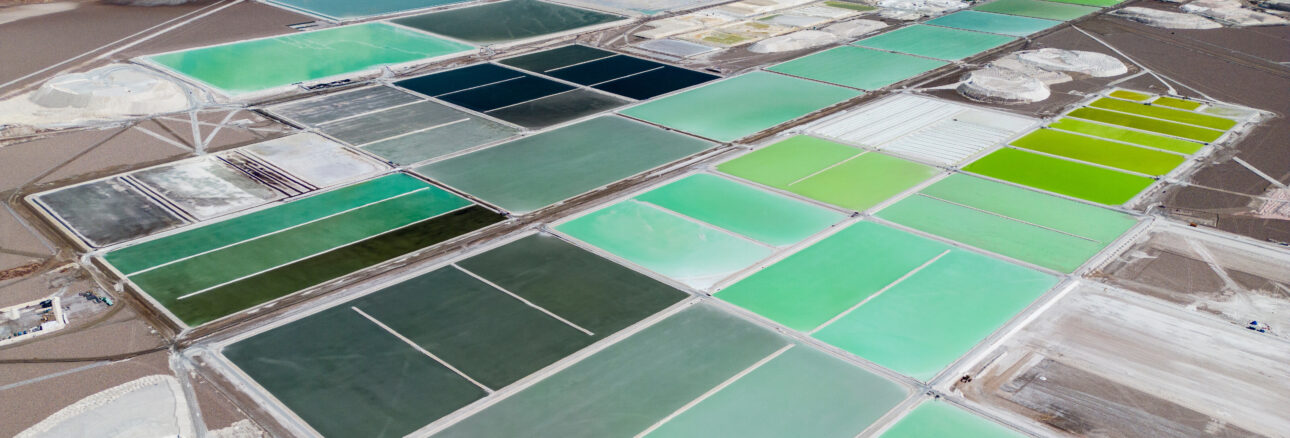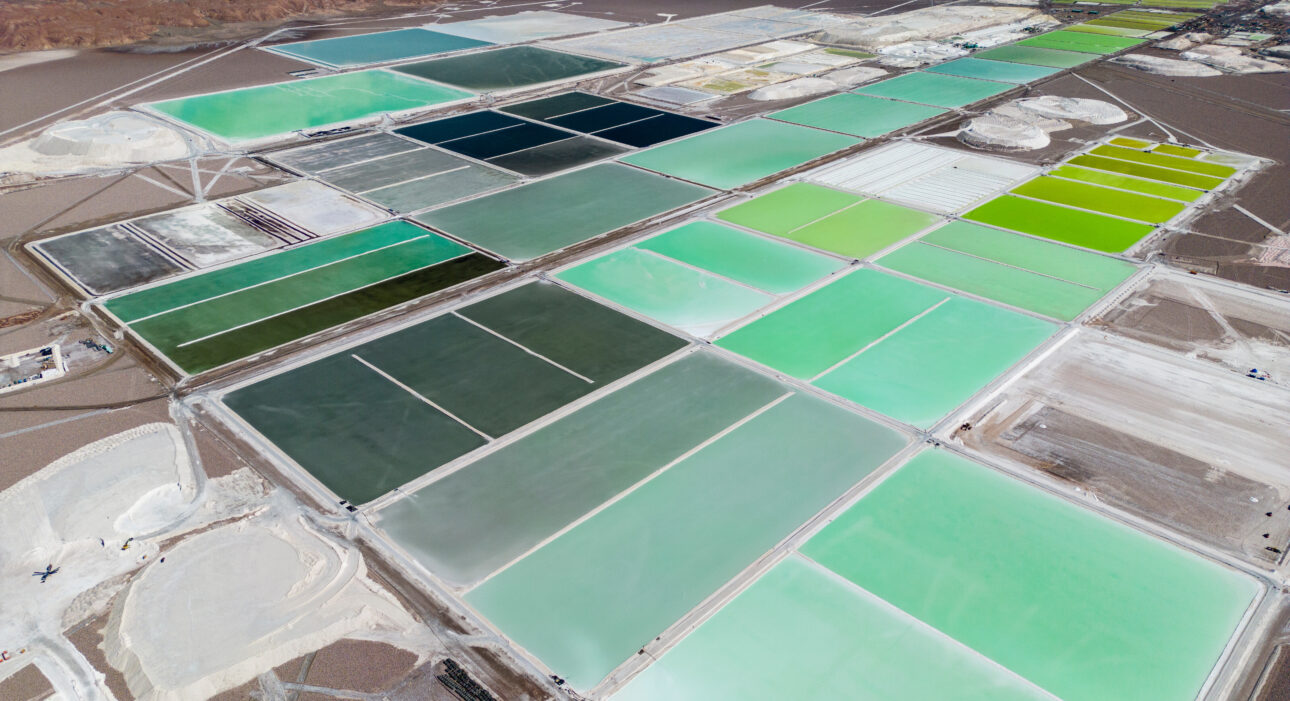Weekly Lithium Lowdown with Chris Williams – Week 2, 2024
Core Lithium halts production at Finniss
Core Lithium announced last week that its Grant’s open pit mine in Northern Territory, Australia, will be put into care and maintenance as spodumene prices continue to edge lower.
The pause includes early works on the BP33 underground mine. For context, Core’s produced 20,692 tonnes of 5.0% Li2O spodumene concentrate in calendar Q3. Annualized, this represents roughly ~1% of 2023 estimated global lithium supply.
Following a problematic ramp-up at the Finniss project in 2023, Core has emerged as a relatively high-cost producer in the Australian spodumene landscape, evidenced by this shut down.
In its Q4 quarterly report expected this month, Core will provide revised operating costs and capital expenditure guidance for the 2023–24 financial year.
Adamas take: The haste with which Core has halted production at Finniss may have caught some by surprise. Although relatively immaterial to the global lithium supply / demand balance, the news sends an ominous signal to the market on the expected timing of a spodumene price recovery.
Microsoft unveils solid state battery technology using 70% less lithium
Microsoft and the US Department of Energy have discovered and prototyped a solid-state electrolyte that uses 70% less lithium than conventional liquid electrolytes. Researchers using AI and supercomputers reduced 32 million potential inorganic materials to a subset of 18 high-potential candidates in a screening process that would have taken decades by traditional lab research methods.
The AI was trained on databases of molecular information enabling it to figure out the required chemistry. A working battery prototype was built around the chosen electrolyte, which contains lithium and sodium, a process which took less than nine months.
Adamas take: An exciting demonstration of how quickly AI can facilitate new discoveries and a glimpse at what the future holds in this regard. That said, conventional electrolytes today are a relatively small contributor to a battery’s overall lithium use versus the cathode thus a 70% reduction of lithium in the electrolyte would have a relatively small impact on the market. Moreover, should the discovery help speed adoption of solid-state batteries with Li metal anodes, it could ultimately accelerate lithium demand.
Argentina’s Salta Province unveils Arizaro salar tender results
Argentina’s Salta Province this week unveiled the results of a tender process which saw 27,600 Ha of lithium exploration rights awarded. Thirteen companies participated in the tender including resource companies Eramet, YPF and Ganfeng.
Areas I-III and V, totaling 19,127 Ha, were awarded to China’s Ganfeng Lithium. Area IV of 8,445 Ha was awarded to Lithium Chile, which has subsequently partnered with Portofino Resources under a 50:50 net equity partnership agreement.
Salta government-owned provincial mining company REMSa holds a 22% equity allocation, with the JV holding the remaining 78%.Area IV extends Lithium Chile’s existing portfolio in the salar. US $5.7M of the total US $16.7M has already been paid for the concession.
Portofino, which has conducted exploration on the property, has committed to reimburse 50% of purchase costs and will be reimbursed $1M in JV credit for their historical work.
Adamas take: Lithium Chile’s success over large cap miners is an encouraging sign to junior Argentinian DLE hopefuls. The purchase price of US$2.5k/Ha is attractive, especially considering the exploration target of 300-400m at >500 mg/L Li concentrations.
Wealth Minerals releases Kuska PEA results
Last week, Wealth Minerals announced PEA results for its Kuska (formerly Ollagüe) brine project, located near the border of Bolivia in Antofagasta province, Chile.
The company plans to use an undisclosed TRL-8 DLE technology (with spent brine reinjection) in a two-phase 10+10 ktpa LCE plant over 20 years.
Kuska’s indicated resource features a 175 mg/L Li concentration.The project’s CAPEX estimate is US $749M, with operating costs at US $5,849/t LCE. Using a long-term price of ~US $30,000/t the NPV10% comes in at US $1.15B post-tax.
Adamas take: Following a flurry of DLE PEA announcements in recent months, it is becoming clear that DLE on continental brines will be at least ~2x the price of evaporative methods. Kuska, it appears, is no exception.
American Lithium releases updated Falchani PEA results
This week, American Lithium announced an update to the 2019 PEA for its Falchani volcanic clay project in Peru.
The study contemplates a three-phase 23+22+17 ktpa LCE conventional acid leach plant operating for 43 years. Updates include flow sheet modifications and pricing.
The ultimate 6 Mtpa mine would cost an estimated US $2.57B to build with cash costs projected at US $5,092/t LCE. Using a flat long-term price of US $22,500/t LCE, the NPV8% of the PEA’s base case comes in at US $5.1B post-tax.
An optional sulfate of potash and cesium recovery circuit costing US $0.9B was evaluated to be value accretive to the tune US $400M (also NPV8%), albeit was not considered within the base case.
Adamas take: We see this project akin to a Latin American Thacker Pass with a better strip ratio (0.6 waste:ore) but further removed from customers. Should clay have its day, Falchani could be a significant feedstock of lithium carbonate beyond 2030.
Hub City Lithium Corp. releases Viewfield PEA results
Hub City Lithium Corp. (a 75/25 joint venture of EMP Metals/ROK Resources) this week announced PEA results for the Viewfield oil field brine project in Saskatchewan, Canada.
The study incorporates Koch absorption DLE together with Saltworks refinery technologies into an average 12,175 tpa lithium carbonate facility operating over 23 years.
The relevant inferred resource averages 128 mg/L Li concentration, ranging from ~200 mg/L to ~100 mg/L Li by end of project.
The project’s capital costs are estimated at US $571M, with operating costs at US $3,319/t LCE. Using a flat long-term price of US $20,000/t LCE, the NPV8% comes in at US $1.07B post-tax.
Adamas take: Koch Technology Solutions is fast becoming to go-to technology provider scoped for North American oil field brine projects. Although expensive to build, the projected operating cost estimates of Viewfield are very competitive resulting in a 45% project IRR.
Chris Williams, Analyst at Adamas Intelligence
Chris is an Analyst at Adamas Intelligence focused on the global lithium industry. He researches and analyzes the lithium value chain to uncover actionable opportunities for clients.
Chris has 11-years experience in mining and oil & gas operations optimization, delivering value from data intensive insight generation. He completed his Bachelor and Masters of Engineering at the University of Queensland, majoring in Mechanical Engineering, and is currently completing a Masters of Business Administration at the University of British Columbia.
EV, Battery and Battery Materials Market Intelligence:
EV Battery Capacity and Battery Metals Tracker
Building on ongoing EV registrations in over 110 countries, our web-based platform helps users track monthly deployment of battery metals and materials, battery capacity, and the ever-evolving competitive landscapes of battery chemistries and cell suppliers.
EV Battery Capacity Monthly
The ‘EV Battery Capacity Monthly’ is a subscription-based report for tracking monthly deployment of passenger EV battery capacity by EV type, region, country, make, model, cell supplier and cell chemistry on an ongoing basis.
Back to overview



